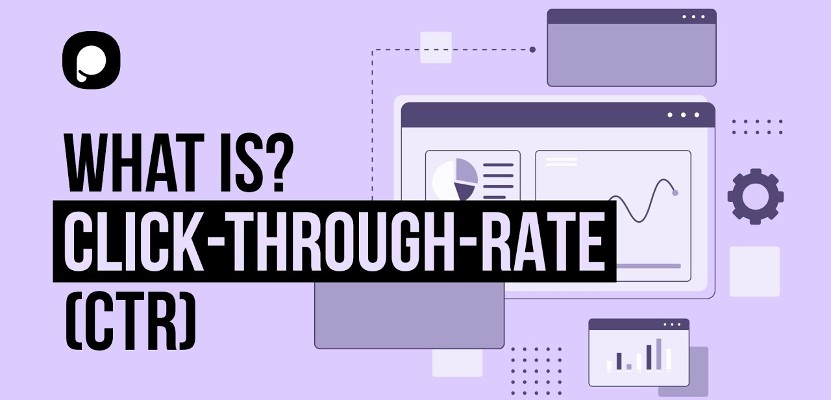Accomplishing Success With Targeted CTR Control
The optimization of click-through rates (CTR) is an important venture for brands aiming to enhance their electronic presence and maximize involvement. Targeted CTR control includes a series of approaches, from data-driven advertisement positionings to the advancement of compelling content customized to particular audiences. Comprehending the nuances of individual habits and utilizing strategies such as A/B testing can substantially influence performance end results. The trip to understanding these methods is complicated and requires an ongoing commitment to evaluation and refinement. The inquiry remains: what specific strategies will produce the most substantial results in this dynamic landscape?
Recognizing Click-Through Rates
Click-through prices (CTR) function as an essential statistics in digital advertising, reflecting the efficiency of on-line web content in driving individual engagement. This statistics is determined by dividing the variety of clicks an advertisement or web link obtains by the total number of perceptions, expressed as a percent (CTR Manipulation). A higher CTR suggests that the material resonates well with the target market, triggering them to do something about it
Understanding CTR is vital for marketing professionals intending to optimize their projects. Various elements influence CTR, including ad placement, layout, and the importance of the content to the audience's rate of interests. As an example, engaging headlines and visually attractive photos can substantially boost the possibility of users clicking a web link.
Moreover, the context in which the web content is presented plays a vital function in identifying CTR. Advertisements presented at critical times or throughout relevant occasions are most likely to record interest. By evaluating CTR information, marketers can identify patterns and areas for improvement, enabling even more targeted techniques. Ultimately, a complete understanding of CTR empowers marketing professionals to fine-tune their methods, making certain that digital campaigns achieve their desired end results efficiently.
Significance of CTR Manipulation
In the competitive landscape of digital advertising, the manipulation of click-through prices (CTR) has come to be an essential approach for improving project efficiency. CTR works as a key performance indicator, mirroring the efficiency of on-line promotions and material in drawing in customer interaction. A greater CTR not only indicates better passion however also can result in boosted online search engine positions and lower cost-per-click (CPC) rates, therefore enhancing overall marketing budgets.
The relevance of CTR manipulation exists in its ability to educate online marketers about customer preferences and habits. By evaluating CTR information, services can recognize which components of their campaigns reverberate most with their target market. This insight permits even more educated decision-making and the appropriation of resources to the most effective networks.
In addition, reliable CTR adjustment promotes an affordable advantage. Brand names that constantly accomplish higher CTRs can outshine rivals, safeguarding a more substantial market presence. In an age where consumer attention is fleeting, catching clicks translates directly to increased conversions and leads, inevitably driving service growth. Hence, mastering CTR manipulation is not simply beneficial; it is crucial for achieving continual success in electronic marketing campaigns.
Methods for Targeted CTR
Accomplishing targeted click-through rates (CTR) requires a strategic technique that includes various strategies customized to specific audience segments. One efficient technique is optimizing ad positionings by utilizing data analytics to determine high-performing channels. By concentrating initiatives on these networks, marketing professionals can improve visibility and increase engagement.
An additional crucial approach is crafting compelling headlines and calls to activity (CTAs) A/B screening different variants can disclose which mixes resonate most with the target market, thus driving higher CTR. In addition, including aesthetic aspects such as captivating images or videos can significantly improve allure, making web content more engaging and shareable.
Personalization also plays an important function; using user data to develop tailored content can foster a sense of relevance, urging clicks. Leveraging social evidence via testimonies and user-generated web content can develop trust, ultimately increasing CTR.
Studying Customer Habits
 Comprehending individual habits is vital for enhancing advertising techniques and improving general efficiency. By examining exactly how individuals communicate with material, marketing experts can acquire valuable insights into preferences, motivations, and discomfort points. This understanding allows the growth of more targeted read here campaigns that resonate with certain audience sections.
Comprehending individual habits is vital for enhancing advertising techniques and improving general efficiency. By examining exactly how individuals communicate with material, marketing experts can acquire valuable insights into preferences, motivations, and discomfort points. This understanding allows the growth of more targeted read here campaigns that resonate with certain audience sections.To efficiently examine customer behavior, numerous devices and approaches can be utilized. Internet analytics systems offer data on individual interaction metrics such as click-through rates, bounce rates, and time invested in page. Heatmaps and session recordings enable marketers to envision individual communications, disclosing which components attract focus and which might be overlooked.
Additionally, individual comments with studies and comments kinds can supply qualitative understandings, boosting the understanding of user sentiment and complete satisfaction. Segmenting individuals based upon demographics, interests, and straight from the source behaviors can additionally improve targeting initiatives, customizing web content to fulfill varied requirements.
Eventually, constant evaluation of individual habits is vital for adapting advertising techniques in real-time. As individual patterns evolve, remaining in harmony with these adjustments makes sure that campaigns remain efficient and appropriate, fostering a much deeper link with the target audience. This foundational understanding establishes the phase for the successful implementation of targeted CTR adjustment strategies.
Measuring Success and Adjusting Methods
Measuring success in targeted marketing campaigns requires a critical technique that integrates efficiency metrics with recurring evaluation. Trick performance signs (KPIs) such as click-through rates (CTR), conversion prices, and customer acquisition prices have to be kept track of constantly to evaluate the performance of manipulation approaches. By developing a baseline, online marketers can assess changes in CTR and determine fads that indicate effective interaction or potential drawbacks.
Consistently examining these metrics allows for the prompt modification of approaches. For circumstances, if a particular campaign shows a substantial drop in CTR, it may signify the need for creative revisions or a reevaluation of targeting specifications. Utilizing A/B testing can additionally refine strategies by comparing variants of advertisements or touchdown web pages, providing understanding into what resonates finest with the target market.
In addition, integrating qualitative responses with surveys or individual interviews can supplement quantitative data, providing a detailed sight of audience assumption. Inevitably, the ability to iteratively analyze and refine strategies based on real-time information promotes a much more receptive advertising and marketing approach, making sure that campaigns continue to be here are the findings straightened with service goals and audience choices. This adaptive technique is vital in achieving continual success in targeted CTR control.
Final Thought
To conclude, targeted CTR adjustment is necessary for optimizing electronic marketing initiatives. By recognizing click-through prices and employing tactical techniques, brands can efficiently boost customer involvement and drive conversions. Continual analysis of customer habits and persistent dimension of efficiency signs facilitate prompt modifications, guaranteeing placement with consumer choices. Eventually, effective CTR manipulation not only increases exposure but additionally fosters depend on and trustworthiness, consequently adding to continual development in competitive markets.
 Targeted CTR adjustment encompasses an array of methods, from data-driven advertisement positionings to the development of engaging content tailored to specific audiences.Click-through prices (CTR) serve as an important metric in digital advertising, showing the efficiency of on the internet web content in driving customer interaction. A greater CTR suggests that the web content reverberates well with the target audience, prompting them to take activity.
Targeted CTR adjustment encompasses an array of methods, from data-driven advertisement positionings to the development of engaging content tailored to specific audiences.Click-through prices (CTR) serve as an important metric in digital advertising, showing the efficiency of on the internet web content in driving customer interaction. A greater CTR suggests that the web content reverberates well with the target audience, prompting them to take activity.CTR serves as a vital efficiency sign, reflecting the efficiency of online promotions and content in drawing in customer involvement.In final thought, targeted CTR adjustment is necessary for enhancing digital advertising and marketing efforts.